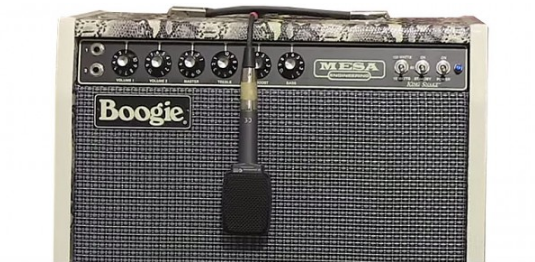Products Category
- FM Transmitter
- 0-50w 50w-1000w 2kw-10kw 10kw+
- TV Transmitter
- 0-50w 50-1kw 2kw-10kw
- FM Antenna
- TV Antenna
- Antenna Accessory
- Cable Connector Power Splitter Dummy Load
- RF Transistor
- Power Supply
- Audio Equipments
- DTV Front End Equipment
- Link System
- STL system Microwave Link system
- FM Radio
- Power Meter
- Other Products
- Special for Coronavirus
Products Tags
Fmuser Sites
- es.fmuser.net
- it.fmuser.net
- fr.fmuser.net
- de.fmuser.net
- af.fmuser.net ->Afrikaans
- sq.fmuser.net ->Albanian
- ar.fmuser.net ->Arabic
- hy.fmuser.net ->Armenian
- az.fmuser.net ->Azerbaijani
- eu.fmuser.net ->Basque
- be.fmuser.net ->Belarusian
- bg.fmuser.net ->Bulgarian
- ca.fmuser.net ->Catalan
- zh-CN.fmuser.net ->Chinese (Simplified)
- zh-TW.fmuser.net ->Chinese (Traditional)
- hr.fmuser.net ->Croatian
- cs.fmuser.net ->Czech
- da.fmuser.net ->Danish
- nl.fmuser.net ->Dutch
- et.fmuser.net ->Estonian
- tl.fmuser.net ->Filipino
- fi.fmuser.net ->Finnish
- fr.fmuser.net ->French
- gl.fmuser.net ->Galician
- ka.fmuser.net ->Georgian
- de.fmuser.net ->German
- el.fmuser.net ->Greek
- ht.fmuser.net ->Haitian Creole
- iw.fmuser.net ->Hebrew
- hi.fmuser.net ->Hindi
- hu.fmuser.net ->Hungarian
- is.fmuser.net ->Icelandic
- id.fmuser.net ->Indonesian
- ga.fmuser.net ->Irish
- it.fmuser.net ->Italian
- ja.fmuser.net ->Japanese
- ko.fmuser.net ->Korean
- lv.fmuser.net ->Latvian
- lt.fmuser.net ->Lithuanian
- mk.fmuser.net ->Macedonian
- ms.fmuser.net ->Malay
- mt.fmuser.net ->Maltese
- no.fmuser.net ->Norwegian
- fa.fmuser.net ->Persian
- pl.fmuser.net ->Polish
- pt.fmuser.net ->Portuguese
- ro.fmuser.net ->Romanian
- ru.fmuser.net ->Russian
- sr.fmuser.net ->Serbian
- sk.fmuser.net ->Slovak
- sl.fmuser.net ->Slovenian
- es.fmuser.net ->Spanish
- sw.fmuser.net ->Swahili
- sv.fmuser.net ->Swedish
- th.fmuser.net ->Thai
- tr.fmuser.net ->Turkish
- uk.fmuser.net ->Ukrainian
- ur.fmuser.net ->Urdu
- vi.fmuser.net ->Vietnamese
- cy.fmuser.net ->Welsh
- yi.fmuser.net ->Yiddish
How to Get a Great Guitar Sound with Sennheiser Microphones
Date:2020/3/7 10:22:16 Hits:

Capturing energetic, vibrant guitar tone onstage or in your studio is easy when you choose the right microphone. Over the years, musicians and engineers have discovered that certain mics serve up consistent results on guitar amplifiers every time, like the Sennheiser e609 and MD 421 II dynamic microphones. These mics have earned reputations as go-to microphones for recording guitar amplifiers. Let’s take a look at what makes these Sennheiser microphones so popular for electric guitar applications.
Sennheiser e609
For simplicity during setup, it’s hard to beat the e609 dynamic microphone – you don’t even need a mic stand! Because it’s a side-address microphone, you can easily hang the e609 right over the top of your combo amplifier in front of the speaker, a popular solution on small or crowded stages. And speaking of stage considerations, the ultra-focused hypercardioid polar pattern helps the e609 reject off-axis sound, which helps prevent unwanted feedback.
Beyond these practical considerations, the Sennheiser e609 simply has a pleasing frequency response that’s tailored well to electric guitar. Lows are tight and punchy without booming, the mids are rich, and the highs are present without sounding harsh. Guitarists and sound engineers alike dig the Sennheiser e609 because it’s practically effortless to set up and gives you consistent, reliable results every time.
Sennheiser MD 421 II
For even more sonic flexibility with your guitar rig, you’ll want to check out the Sennheiser MD 421 II. It can handle extremely high SPLs without distorting, which makes it a popular pick for the loudest amplifiers. A five-position bass roll-off switch gives you impressive power to sculpt the frequency response and helps you manage proximity effect when close-miking your amplifier. These two features make the MD 421 II extremely versatile with all types of guitar rigs.
The MD 421 II is known for sounding great as soon as you put it in front of the amp, with a rich and full sound that’s also very defined and articulate thanks to this mic’s fast response. It’s also worth noting that the MD 421 II is built incredibly well, which is another reason it’s a popular choice among live sound engineers.
Where to Position Your Microphone
Where you place your microphone in relationship to the speaker is key to getting the tone you want. Mid and high frequencies intensify at the center of the speaker cone, while low frequencies intensify at the edges of the speaker. To find the perfect balance of midrange bite and low-frequency power, listen to the miked signal as you move the microphone from the center of the speaker cone to its edge. You can fine-tune the balance by angling the microphone toward either the center or the edge of the speaker.
The distance from the mic to your speaker also plays a huge role in the sound that you capture. Moving the mic several inches away from the speaker allows sound waves more room to develop, often resulting in a “fuller” sound. However, moving the mic closer to the speaker helps prevent leakage from outside sound sources. Use your ears to find the right balance of fullness and isolation, and you’re sure to get a great guitar tone that’s easy to work with upon mixdown.
Leave a message
Message List
Comments Loading...





